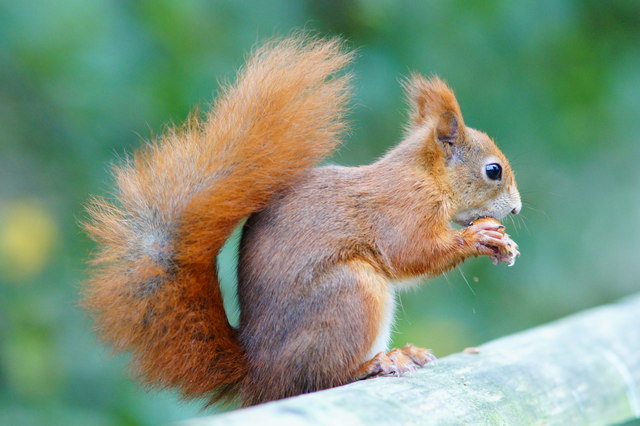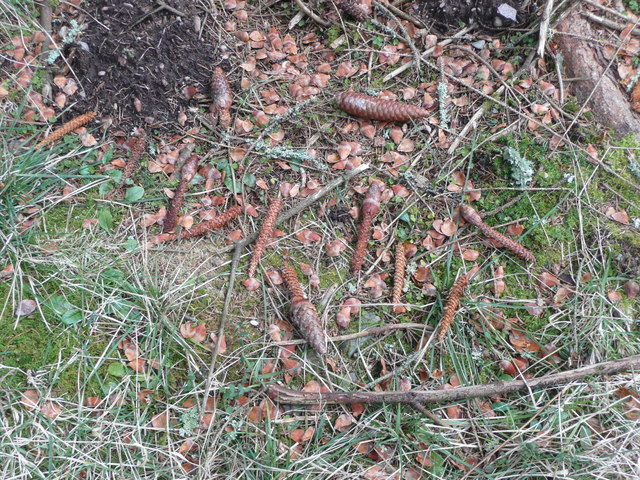Biodiversity
Related Links
Latest News
A Starring Role for Nantclwyd’s Lesser Horseshoe Bats
22.05.2015
Living Landscape Brought Back to Life
05.12.2014
Facebook Page
Red squirrel
The native red squirrel has been pushed out of much of its former range by the introduced grey squirrel, but populations remain in parts of Denbighshire, most notably at Clocaenog forest.
 Description and identification: The red squirrel is the only native squirrel species in Britain. Its creamy white underside and reddish-brown upper parts distinguish the red squirrel from its introduced cousin, the grey squirrel from North America. It has tufted ears, a bushy tail, bright black eyes and is smaller than the grey squirrel.
Description and identification: The red squirrel is the only native squirrel species in Britain. Its creamy white underside and reddish-brown upper parts distinguish the red squirrel from its introduced cousin, the grey squirrel from North America. It has tufted ears, a bushy tail, bright black eyes and is smaller than the grey squirrel.
Habitat: Red squirrels can inhabit both broadleaved and coniferous woodland. However in Britain they are only found in coniferous woodland – the grey squirrels having colonised broadleaved woodlands. In coniferous woodlands, grey squirrels appear to lose their competitive advantage, allowing red squirrels to hang on.
 Diet: The diet of red squirrels consists mainly of tree seeds (such as pine cones and acorns), although they will eat flowers, berries, fungi, bark and sometimes even young birds and eggs.
Diet: The diet of red squirrels consists mainly of tree seeds (such as pine cones and acorns), although they will eat flowers, berries, fungi, bark and sometimes even young birds and eggs.
Ecology and reproduction: Red squirrels build large nests in trees, called dreys, used for both breeding and shelter. The breeding season can last from January to September, and red squirrels often breed twice a year, once in the spring and again in the summer, depending on food availability. Red squirrels do not hibernate, but store food when it is abundant during autumn to eat during the winter. They are diurnal (active during daylight hours).
Distribution: In England and Wales red squirrels have declined significantly since the introduction of the grey squirrel and now only a few remnant populations remain. In Denbighshire, we are lucky to still have a population of red squirrels in Clocaenog forest. In Scotland they are more widespread. Across the world, red squirrels are found in Europe, Russia and northern Asia.
Threats: The main threat to red squirrels in Britain is the grey squirrel, which was first introduced by the Victorians. It is a stronger competitor and also carries a pox virus which the reds are susceptible to.
Status: The red squirrel is protected under UK law and is a priority species for conservation action at a UK, Wales and Denbighshire level.



